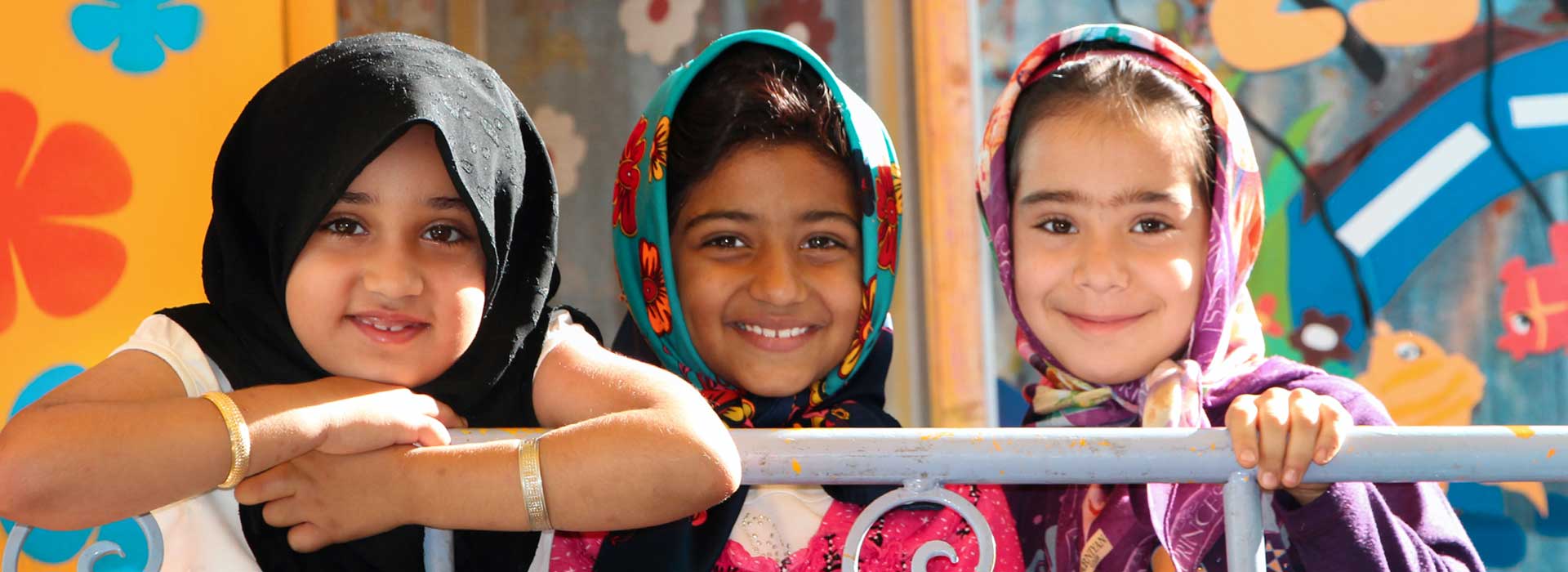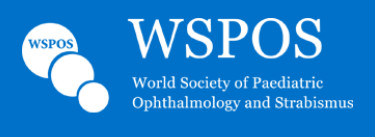Education
Case Report: Case 2
Case Presenters
Dr. Monica Samant is a Pediatric, Squint & Neuro Ophthalmology consultant at the Laxmi Eye Institute, Panvel, Mumbai, India. She has completed her Post graduate training in Ophthalmology from the D. Y. Patil Medical College, Kolhapur. She then pursued a Comprehensive Ophthalmology and Pediatric, Squint and Neuro – Ophthalmology Fellowship from the renowned L. V. Prasad Eye Institute, Hyderabad, India.
In Sept 2015, Dr. Samant underwent a Research Fellowship in Pediatric Ophthalmology at Children’s Hospital, University of Pittsburg [UPMC]. Her interests include Pediatric Cataracts, Squint and Genetics. She is involved in studies on the same and some of her work has been accepted and published Nationally as well as Internationally.
Status: CASE CLOSED
Members’ Responses:
Out of the members who responded to our Global Case Report Quiz, 14.3% preferred a Medical approach, while 85.7% preferred a Surgical approach for the control of the IOP in this case.
Out of the members who preferred a Surgical approach, 63.9% preferred to perform a Trabeculotomy with Trabeculectomy, while 36.1% preferred to Use a Valve.
38.9% out of the members who preferred a Surgical approach opted for Immediate Surgical Intervention, 36.1% chose to intervene surgically After Medical Management Failure; while 25% preferred to wait till After Neurosurgical Intervention to intervene surgically.
Experts Opinion
Paolo Nucci

Dr. Paolo Nucci; MD, FEBO completed his medical education at the University of Naples in 1983. He then went on to pursue a Residency Program at the University of Milan in 1988 followed by a
Fellowship in Pediatric Ophthalmology & Strabismus at the University of Chicago in 1989. He is currently a Professor at the University of Milan & is the Chairman of the University Eye Clinic at the San Giuseppe Hospital. He is also the Associate Editor of the European Journal of Ophthalmology and International Ophthalmology in addition to being a former member of the Editorial board of Ophthalmic Genetics.
Dr. Nucci is a reviewer of the Archives of Ophthalmology, Ophthalmology, American Journal of Ophthalmology, Journal of Cataract & Refractive Surgery, Ophthalmology, JAAPOS, Graefe Archives & International Ophthalmology. He has given Lectures in several Universities in Europe, USA and Asia, in addition to authoring 11 Books and 130 papers that have been reported in PubMed. He is the Senior Author of more than 70 publications. He is the President of the Italian Society of Pediatric Ophthalmology and a former member of the Scientific Bureau of the WSPOS.
NF1 is considered a neurocristhopathy affecting the neural crest derived structure of the eye. Angle underdevelopment is often present in NF1 patients with variable prevalence of glaucoma, but only few papers reported globe enlargement, glaucoma and NF1.Morales et al reported a significant series in 2009 in which glaucoma surgery was required in all patients.In this specific case the most important thing is to differentiate between a secondary glaucoma related to an occupying space orbital lesion or a primary congenital glaucoma.In the latter case, although medical therapy seems to be effective, I hardly believe that will work for long time. At the same time, systemic acetazolamide carries significant collateral effect such as drowsiness, growth retardation, bone marrow depression and calculosis.
Therefore, I would discontinue the diuretic and if the pressure is higher than 20mmHg I would opt to carry out an immediate surgical procedure.I would expect a meshwork permanently compromised in this situation, and my choice would be for a tube, since by-pass surgery is less likely to fail than trabeculectomy and also warrants longer term pressure control.Regarding proptosis, I must admit that my experience is limited to ptosis repair that carries almost invariably an unfavorable outcome, particularly in the presence of sphenoid dysplasia.The attitude of Neurosurgeon in NF1 is to explain parents the burden of repeated and very long surgery, and to delay surgery. Of course if we are dealing with a secondary glaucoma the indication needs to be weighed with the ophthalmologist according to the visual prognosis.Genetic studies do not have priority in such a well-defined case.
Kimberley Tan

Dr. Kimberley Tan; BSc (Med), MBBS, FRANZCO trained in Ophthalmology at the Royal Victorian Eye and Ear Hospital, Melbourne. He then undertook fellowships in Cheltenham, UK & at the British
Columbia Children’s Hospital, Vancouver. He has been the Head of the Department of Ophthalmology at the Sydney Children’s Hospital since 2009 and runs the Neuro-ophthalmology and Adult Strabismus clinic at Royal North Shore Hospital, Sydney. He is a Senior Lecturer at both the University of New South Wales and the University of Sydney. He has been a RANZCO appointed Board examiner in Paediatric Ophthalmology and Strabismus since 2010.
In response to the specific questions as they have been asked, my answers are : management is surgical, a valve and when more information is known about the neurosurgical plans.However, one could argue that all the options given are not incorrect. Medical treatment is working for now, although I would not continue Diamox long-term given potential side effects. If other drops are available they could be used. Surgery is likely to be more “curative”, and a valve is more likely to be effective in a complex case like this infant.
However, if time is required for the neurosurgeon to decide on treatment then a combined Trabeculotomy / Trabeculectomy may be a simple way to control glaucoma until a decision is made on the intracranial / orbital mass.It cannot be over-emphasized that the primary outcome of the left eye will very much depend on what happens with the SOF / orbital tumour. This then dictates the value of aggressive management of glaucoma, amblyopia and refractive errors. Any neurosurgery obviously runs a high risk of vision loss, and given the maxillary nerve origin, one would expect a degree of sensory deficit post-operatively. Thus, a higher risk of exposure keratopathy, ulceration, infection and loss of eye. On the other hand, there appears to have been growth and the child is only 10 months of age, so we would expect ongoing growth. If the neurosurgeon elects to observe, one would expect increasing proptosis, more difficult to control glaucoma and generally increasing disfigurement. Both pathways make the treatment of refractive error and amblyopia very challenging and there is a real chance of enucleation with either.I would not treat the proptosis separately, rather just protect the cornea from exposure, using lubricants/gels and if needed a small tarsorrhaphy.
I certainly would not contemplate additional orbit surgery for the proptosis as the surgery needs to be directed by the plans of the neurosurgeon.The diagnosis here seems straight forward so genetic studies have more of a place for the family for future children. Regardless, genetic counselling for the entire extended family should be arranged.
Arif O. Khan

Dr. Arif O. Khan; MD is the Section Head of Pediatric Ophthalmology, Director of the Center for Genetic Eye Disease, and Clinical Professor of Ophthalmology at the Eye Institute of Cleveland Clinic Abu Dhabi. Prior to joining the Cleveland Clinic Abu Dhabi, Dr. Khan served as Senior Academic Consultant in the Division of Pediatric Ophthalmology at King Khaled Eye Specialist Hospital from 2007-2015. He was also a Senior Scientist, Department of Genetics, at King Faisal Specialist Hospital & Research Center during the same time period. Dr. Khan completed his residency in Ophthalmology at the Mount Sinai Medical Center in New York City and his fellowship in Pediatric Ophthalmology & Strabismus at Children’s Hospital Medical Center in Cincinnati, Ohio. Before he and his family moved to the Middle East in 2002, he had been in private practice on Long Island, New York. Dr. Khan’s clinical and research interests are the management and genetics of ocular developmental disorders and strabismus. He is a frequent presenter at international ophthalmology meetings, having given more than 250 invited presentations. He has authored over 270 scientific publications, with his most notable contributions being in phenotype-genotype correlations.
Dr. Khan has served on the Editorial Board of the journal Ophthalmic Genetics since 2009. In addition, he has served on the Editorial Board of the Journal of AAPOS from 2010-2014 and has been the Associate Editor of the journal since 2014.
Dr. Khan received the American Academy of Ophthalmology Honor award in 2011 and the AAPOS Honor award in 2015. He was elected to the American Ophthalmological Society in 2015. Dr. Khan is
an International Consultant for the American Academy of Ophthalmology Basic and Clinical Science Series Part 6 (Pediatric Ophthalmology and Strabismus) for the period 2015-2018.
This approximately 10-month-old infant has left eye glaucoma related to neurofibromatosis type 1 and extreme buphthalmos in that eye. The father and paternal grandmother also have signs of neurofibromatosis type I. Prior imaging of the child showed a probable neurofibroma entering the left superior orbital fissure and thus there may be an element of left eye proptosis in addition to buphthalmos. A refraction is not provided, but left eye extreme myopia is expected. An assessment of vision is not provided but significant left eye amblyopia is expected. It seems there has not been amblyopia treatment to date. The intraocular pressure is controlled with a single topical beta-blocker and oral acetazolamide.Realistically, the prognosis for useful vision in the left eye is poor because of amblyopia related to severe anisometropia. Goals for this child are comfort and preservation of what vision there is in the left eye. I would control the glaucoma with topical medications if possible.
If surgery were required to control the pressure, I would implant a valve. If exposure keratopathy is not an issue and spectacles can be fitted, amblyopia treatment is a priority.If the left buphthalmos / proptosis is causing an exposure keratopathy that is not manageable by conservative measures or a partial tarsorrhapy, I would encourage my neurosurgical / orbital colleagues to remove / debulk the left orbital tumor as much as possible.
If despite such measures there is still exposure keratopathy that is causing pain or infection risk, removal of the globe would be a consideration.Genetic testing is not required to make the diagnosis or to manage this case. However, analysis of the NF1 gene could be performed if the family is interested in knowing the underlying mutation and using this information for the benefit of other family members who are not clearly affected. Knowing the specific mutation would allow specific testing for the mutation in family members at potential risk for harbouring the mutation. Such testing would identify those family members who should be carefully screened throughout their lifetime and are at risk of passing the mutation to their children (and those who do are not).

